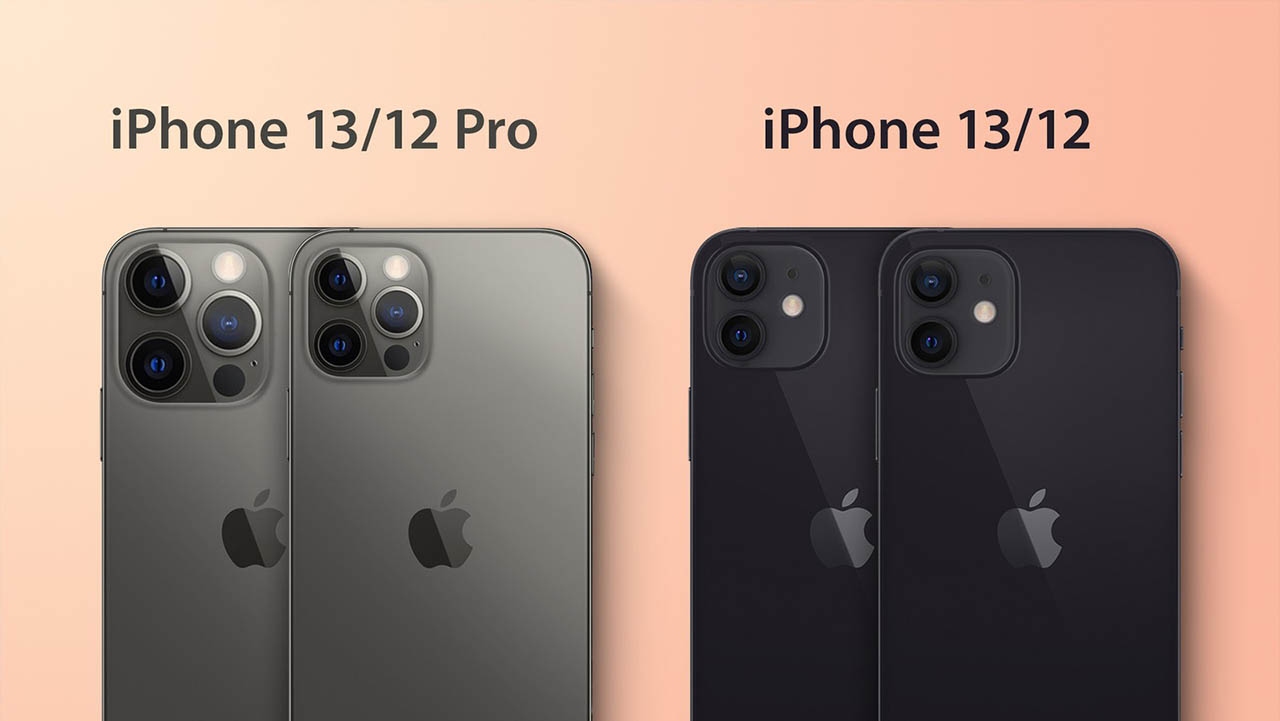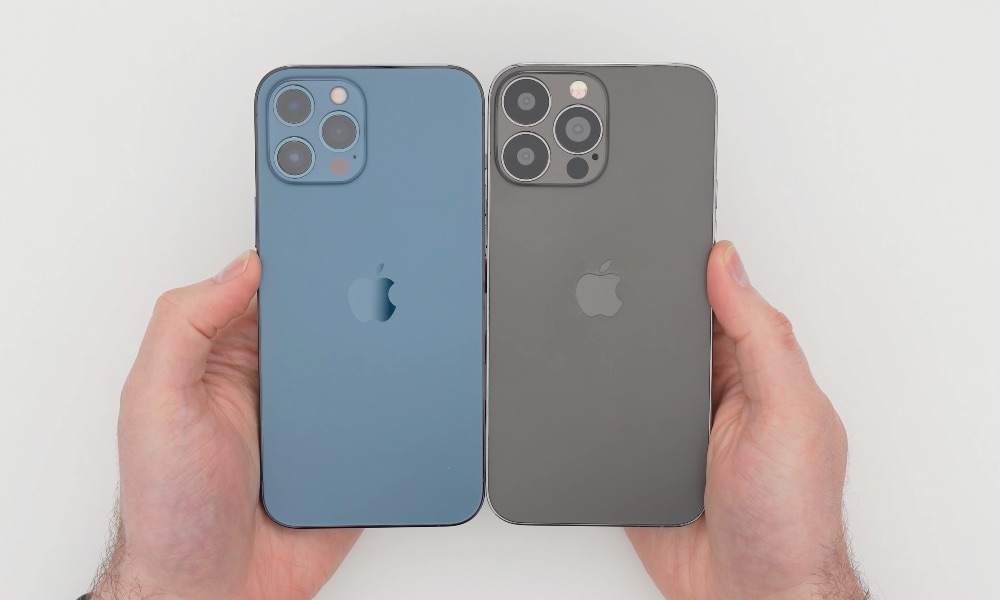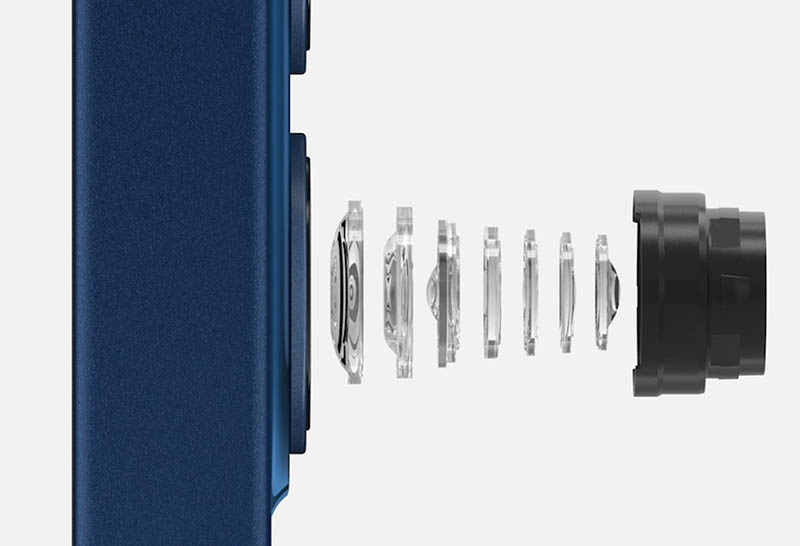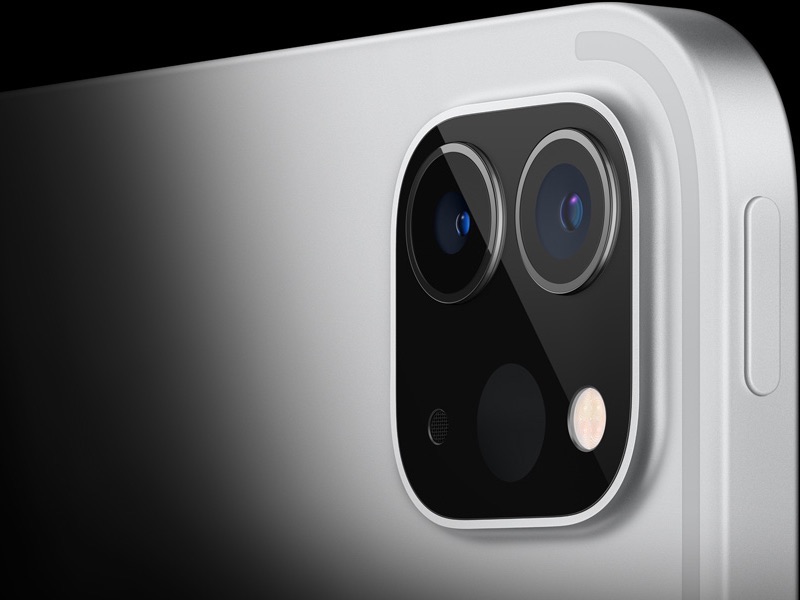Actually, Apple improves the cameras of the iPhones every year. If the hardware does not improve, there are new software functions. For example, last year ProRaw was introduced as a new format and we also got a better night mode, thanks to smart techniques. What can we expect this year? There are already some rumors about the iPhone 13's cameras.
- Camerabult
- ProRes
- Portrait videos
- Ultra wide angle lens
- Better specs
- Pro vs Pro Max
- Wide Angle Lens
- Lenses
- Macro
- Center Stage
- Periscope
#1 Bigger camera bump
It may seem like a step back if the camera bump gets even bigger, but it could still be a positive development. By making the camera bump bigger and thicker, Apple can prevent all lenses from sticking out too far. With the iPhone 12 series, the lenses protrude from the camera bump. A bigger bump probably also gives Apple the option of wider aperture and sensor-shift stabilization on more models, rumored to be even on álle.

The website MacRumors got its hands on schematics of the iPhone 13 and concludes that the devices themselves are also getting thicker. This is most visible at the camera bump: it goes from the current 1.5 mm and 1.7 mm to 2.51 mm and 3.65 mm respectively for the iPhone 13 and iPhone 13 Pro. The module is also slightly larger in size, if we are to believe the rumors. A purported case for the iPhone 13 Pro Max would show a larger cutout near the camera module.
#2 ProRes resolution for better post-processing
The Pro line of the upcoming iPhones will probably get a higher resolution for videos: ProRes. This can be compared to a video equivalent of ProRAW, although ProRes is a long-standing term. You make videos that are compressed as little as possible. That gives you much more freedom in editing colors.
Note: ProRes is not sharper than 1080p or 4K. It is a way the recording is processed with less optimization by algorithms. So we don't expect the iPhone 13 Pro (Max) to shoot images with ProRes 8K.
#3 Portrait mode during videos
The same report as the previous point would show that the Pro line will get support for portrait mode in videos. In fact, older iPhones can also film in portrait mode, namely with FaceTime in iOS 15. However, you can't record that and the quality is lower. The iPhone 13 Pro (Max) should also be able to work in the Camera app, in combination with the aforementioned ProRes resolution.
Portrait mode in video on the iPhone 13 Pro (Max) uses multiple lenses to separate the foreground from the background. The LiDAR sensor also plays a role, as is already the case in the iPhone 12 Pro. Portrait mode in video should also allow for additional filters, such as better shadows.
#4 Improved super wide angle
It is almost certain that Apple will improve the super wide angle. At the moment it has an aperture on the iPhone 12 of f/2.4, but it would go to f/1.8 on the iPhone 13. The smaller the f-number, the more light gets into the lens, so your photos look good even in poor light conditions. A small f-number can also provide more depth of field. It would apply to all iPhone 13 models, not just the more expensive Pros.
#5 Advanced specs on all models
Information that the website MacRumors got its hands on would show that many specs that you now only find on the iPhone 12 Pro models will soon also be available on the cheaper models. Possibly that means the introduction of the LiDAR scanner and the 2.5x telephoto zoom on cheaper models.
#6 No difference between Pro and Pro Max…
Many people were displeased with the iPhone 12 series that you need the largest and most expensive model to take advantage of all the camera features. For example, only the iPhone 12 Pro Max has a new ‘sensor shift’ stabilization system, for photos in poor lighting conditions. This shifts the sensor and not the lens to make a more stable shot. Many people had hoped it would also be in the iPhone 12 Pro, but Apple kept it exclusive to the Pro Max. However, this device has the disadvantage that it is quite expensive and, above all, very large.


With the iPhone 13 series, the differences seem to be less significant. And that's good news for people who want to take the best possible photos, but also want a slightly more compact 6.1-inch device. For example, the sensor shift stabilization could also be available on the Pro.
#7 … except for the wide angle lens
Yet you will also have to have the Pro Max model in 2021 for the best camera. According to analyst Ming-Chi Kuo, the wide-angle camera has an aperture of f/1.5, while that is f/1.8 with the other models. If that's the only difference in cameras, we don't think it's worth the extra bucks. Certainly not if you're not a fan of big phones.
We already talked about the super wide-angle lens, but something is also going to change with the regular lens. The iPhone 13 Pro Max will then have an f/1.5 aperture, while all other iPhone 13 models will get an f/1.6 lens, similar to the iPhone 12 series. At least that's what Ming-Chi Kuo says, who usually has good insight into the production process.
The aperture is the light opening of your lens. It determines how much light passes through the lens onto the sensor. The lower the number, the more light can enter. Aperture also affects depth of field: a small aperture gives more depth of field. It's better to focus on one object, while the rest is blurred.


#8 iPhone 13 with 7P lens stack
For enthusiasts, it's also good to know that the iPhone 13 wide-angle camera will get a 7P lens stack, according to Kuo. These will likely be made by the Chinese lens manufacturer Sunny Optical. A stack of more lenses can provide better image quality and less distortion.


Apple switched to a 7P lens stack with the iPhone 12 series, after which Android manufacturers quickly followed and even immediately went to an 8P lens stack. The iPhone 11 Pro still uses 5P for the super wide-angle camera and 6P for the wide-angle and telephoto lens.
#9 Better macro camera
A surprising discovery was made with the iPad Pro 2021: it turned out to have an undiscovered macro function. With the iPhone 12 Pro you can focus up to about 8 centimeters from the subject, but with the iPad Pro 2021 you can get much closer.


“The iPad actually has a built-in microscope,” concludes the maker of the camera app Halide. Macro photos are photos where you are very close to the object, without it being out of focus. This allows you to see very accurately the details and the structure of the object. You can take a sharp photo with the camera of the iPad Pro 2021 up to very close to an object. We want that in the iPhone, of course!

2021 – August 20, 10:28 AM: Updated following the latest rumors about the camera.